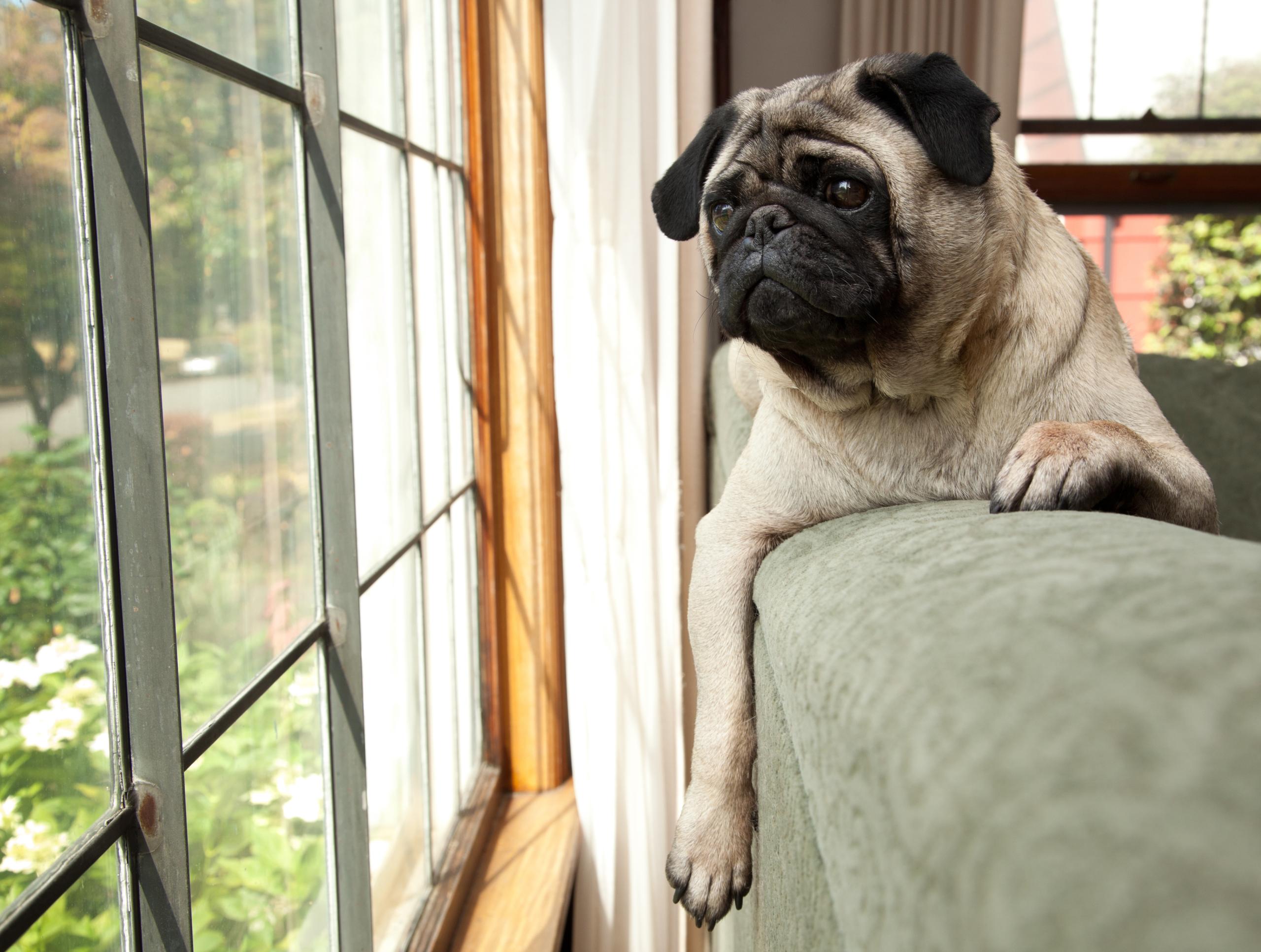Home alone
We can’t take our dogs everywhere, so leaving them at home alone is sometimes necessary. But how do you ensure that they don’t suffer separation anxiety? Blue Cross has the answers

Dogs are very social animals who would naturally live in family or friendship groups and have evolved alongside humans to work and live with us as our companions, so they can struggle to be left alone.
- The idea is to teach them that being alone isn’t scary at all; it’s a time to relax and feel comfortable.
- Prepare an area where they can be relaxed and comfortable and where they will be left. You can also use a stairgate to section off an area that they can use as this safe space.
- Put a comfortable bed and water in this area, and chew items, too, should your dog need them (chewing is a calming activity).
- Many dogs will benefit from a radio on low and some clothing that you’ve worn may also increase your dog’s sense of security during the following training and when they are left alone.
Training
- Randomly during the day pop your dog in the area or behind the stair gate with a tasty chew or treat such as a Kong toy stuffed with treats or pâté.
- Close the stairgate and go about your day-to-day business as normal.
- After a few minutes, open the stairgate – ideally you want your dog to be relaxed and still engrossed in the treat.
- If your dog struggles with this, stay in the room with them but don’t interact act with them. Once they are used to the idea of being in the room with you (but not interacting with you!), you can start shutting the stair gate for a few minutes.
- Over a period of days, gradually increase the time your dog is left behind the stair gate until you get to a point that they feel relaxed enough for you to wander out of sight completely.
- Build your dog up to being left in this area for up to half an hour while you are busy elsewhere in the house.
- Once your dog is comfortable with this, you can begin to get them used to short periods
of time alone in the home.
Leaving the house
Prepare the area as normal and follow the same routine as before. Once your dog is comfortable and tucking into something tasty, leave the house. Return after a few minutes and repeat over the day if your dog is comfortable. Gradually increase the time you leave your dog alone to about 30 minutes over a period of days. If your dog struggles, take a few steps back and start from when they were last comfortable. Some dogs will take longer than others to remain calm and relaxed when they are left alone.
‘Desensitising” your dog
If your dog looks worried when you grab your keys or put on your coat, you will need to spend some time ‘desensitising’ them. To do this, regularly pop your dog in the area during the day as before and get them used to seeing and hearing you pick up your keys, coat or bag. At this point, do not to leave the house – just allow your dog to get used to these sights and sounds while relaxed and comfortable. Once they look calm when they see or hear these things (it may take several days), you can start again, leaving the house for short periods. Keep greetings friendly and predictable on your return, even if you find your dog has chewed something or toileted. Punishment won’t help your dog – just go back a few steps and start
Spotting the signs of separation anxiety
If your dog is showing any of the symptoms below when you leave them home alone, you should talk to your vet who can refer you to an animal behaviour and training council- accredited behaviourist.
- Your dog becomes distressed when you leave. They may show physiological signs of fear – increased heart and breathing rate, panting, salivating, increased activity and, sometimes, a need to go to the toilet.
- Your dog may try to follow you as you leave, scratching at doors and carpets
or jumping up at window sills to look for a way out. Alternatively, your dog may bark, whine or howl to try and persuade you to come back. - After the frantic period, your dog may settle down to chew something that you have touched into small pieces and curl up on the debris, forming a ‘barrier’ of your scent around them for security.
- When you return, your dog may be elated and excitable. They may be wet, from salivating or excessively drinking due to stress.
- When you are home, your dog may attempt to follow you wherever you go.
- They may begin to display anxious behaviours when they see you preparing to leave the house, such as panting, pacing, drooling, howling and barking.
For more details or to find your nearest Blue Cross centre or hospital, visit bluecross.org.uk

Leave a Reply
Please login or register to leave a comment.